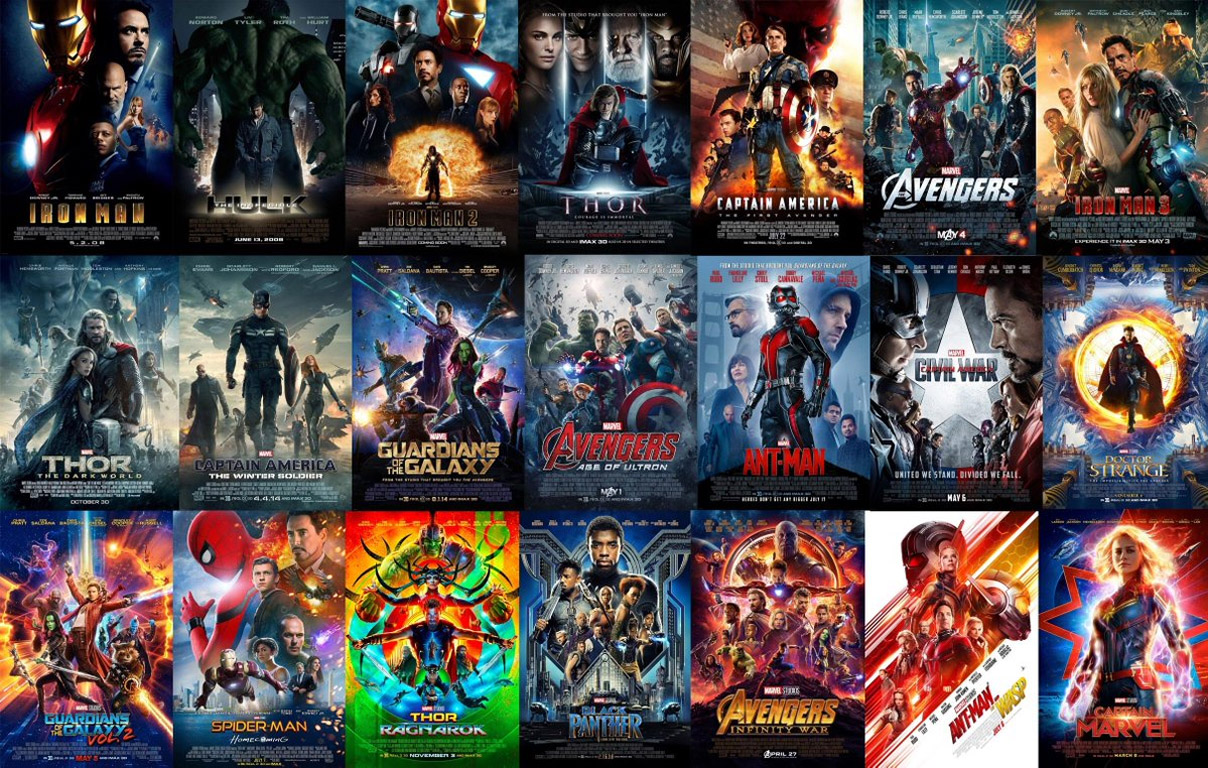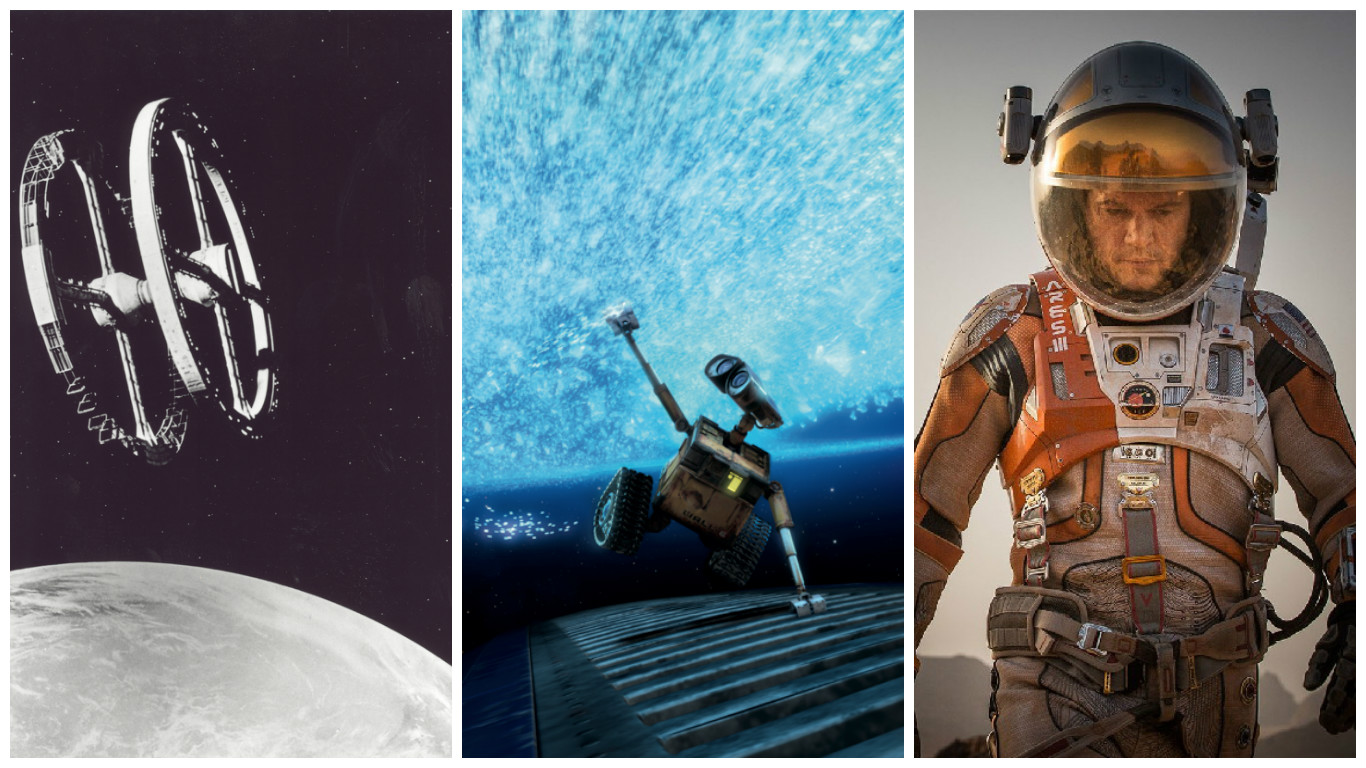The Grand Tapestry: Unraveling The Magic Of Movie Universes
In the ever-evolving landscape of cinematic storytelling, few concepts have captivated audiences and reshaped the industry quite like the "movie universe." What began as a clever way to extend beloved franchises has blossomed into a full-blown cultural phenomenon, inviting viewers into sprawling, interconnected narratives that span decades and countless characters. This isn't just about sequels; it's about building intricate, shared worlds where every film, every show, and sometimes even every short, contributes to a larger, cohesive narrative fabric.
At the heart of this revolution lies the Marvel Cinematic Universe (MCU), a titan that has redefined what's possible on the big screen. But the idea of a shared cinematic world isn't new, nor is it exclusive to superheroes. From classic monsters to modern-day blockbusters, the allure of a consistent, expanding reality where characters can cross paths and stories intertwine has proven irresistible. This article delves into the fascinating world of movie universes, exploring their definition, history, the unparalleled success of the MCU, the challenges they face, and what the future holds for these grand cinematic tapestries.
Table of Contents
- What Exactly is a Movie Universe? Defining the Cinematic Tapestry
- The Marvel Cinematic Universe: A Phenomenon Unparalleled
- The Anatomy of Success: Why the MCU Thrives
- Challenges and Criticisms: The Dark Side of Shared Universes
- Beyond Marvel: Other Noteworthy Cinematic Universes
- The Future of Movie Universes: What's Next?
- Navigating the Multiverse: How to Explore a Movie Universe
- Conclusion
What Exactly is a Movie Universe? Defining the Cinematic Tapestry
A movie universe, often interchangeably called a "cinematic universe" or "shared universe," is a fictional world where multiple films (and often television shows, short films, and other media) exist within the same continuity. Unlike traditional film series that follow a single narrative or character arc across sequels, a movie universe allows for different characters and storylines to unfold independently while still being connected by shared events, locations, or overarching themes. This interconnectedness is key, fostering a sense of a larger, living world.
The concept transcends mere sequels. For instance, while the *Final Destination* horror films replace their cast each time, they don't constitute a shared universe in the true sense, as there's no meaningful character crossover or direct narrative link beyond a recurring premise. A genuine movie universe demands a deeper level of integration, where characters from one film can realistically appear in another, and events in one story can have tangible repercussions in others. It's about building a consistent, believable world that can host an array of diverse narratives.
More Than Just Sequels: The Core Criteria
To truly qualify as a cinematic universe, certain criteria must be met, distinguishing them from simple franchises or indirect sequels. Based on established definitions, these are the hallmarks of a true shared movie universe:
- Existence within the Same Universe: Films must explicitly exist within the same fictional reality. This means characters, events, and locations can directly interact or influence one another across different film titles.
- More Than Passing References: The connection must be substantial. Existing within the same universe as another film must be more than a fleeting reference, an inside joke, or a brief cameo that has no bearing on the plot. The shared elements should contribute to the world-building or character development.
- Potential for Crossover: There should be a clear potential for characters from different films to cross over and interact, even if they haven't done so yet. This implies a consistent set of rules and a unified timeline.
- Independent Production (often): While not a strict rule, many successful movie universes, like the Marvel Cinematic Universe, are independently produced by a single studio (e.g., Marvel Studios) to ensure creative cohesion and a unified vision.
These criteria ensure that a movie universe is a deliberate, expansive storytelling endeavor, rather than a loose collection of related films. It's about building a coherent narrative playground for creators and audiences alike.
The Birth of a Shared World: Early Examples
While the term "cinematic universe" might feel modern, the concept of a shared world in film has roots stretching back decades. One of the earliest and most notable examples is the Universal Monsters universe. Starting in the early 20th century, particularly with films like *Frankenstein* (1931) and *Dracula* (1931), Universal Pictures began to create a shared continuity where characters like Frankenstein's Monster, Larry Talbot (The Wolf Man), and Dracula could appear in each other's films. For instance, *Frankenstein Meets the Wolf Man* (1943) is a clear example of this early cross-pollination. This "Universe origin film start date end date connecting characters universal monsters, 1913 present Frankenstein's Monster, Larry Talbot, the Wolf Man" demonstrates a pioneering effort in shared storytelling.
These early attempts, though not as meticulously planned or as financially gargantuan as today's counterparts, laid the groundwork. They showed that audiences enjoyed seeing beloved characters from different stories interact, creating a sense of a larger, more vibrant world beyond the confines of a single film. It was a precursor to the grand ambitions that would define the 21st-century movie universe.
The Marvel Cinematic Universe: A Phenomenon Unparalleled
When we talk about a successful movie universe today, the conversation inevitably turns to the Marvel Cinematic Universe (MCU). The MCU is not just a franchise; it is a cultural phenomenon that gave us one of the most ambitious crossovers in cinema history. Independently produced by Marvel Studios, this American media franchise and shared universe is centered on a series of superhero films based on characters from Marvel Comics. The franchise has expanded far beyond its initial cinematic offerings, now including comic books, short films, television series, and digital series, all existing within the same intricate continuity.
With over a decade of films and related media, the MCU has become one of the most successful movie franchises in history and grossed billions of dollars worldwide. Its unparalleled success lies in its ability to translate the complex, interconnected nature of comic book storytelling to the big screen, captivating both long-time comic fans and entirely new audiences. The MCU has allowed generations of comic book fans to ascend to the highest throne in pop culture, while allowing millions more who have never visually connected comic page panels together to become versed in the lore and characters.
From Comic Panels to Global Phenomenon: The MCU's Origin Story
The genesis of the Marvel Cinematic Universe can be traced back to a bold gamble. Starting with *Iron Man* in 2008, the franchise began with films independently made by Marvel Studios that are primarily set within this same universe, much like Marvel has done with their comics. This initial film, starring Robert Downey Jr. as Tony Stark, wasn't just a standalone superhero movie; it was a foundational piece of a much larger puzzle. The post-credits scene, featuring Nick Fury's introduction of the "Avengers Initiative," signaled Marvel's audacious plan to build an interconnected world.
The strategy was simple yet revolutionary for cinema: emulate the shared universe model of comic books. Each film would introduce new characters or deepen existing ones, while subtly weaving in threads that would eventually converge in massive crossover events. This meticulous planning, especially in the early phases, built anticipation and rewarded dedicated viewers who followed every narrative beat. The commitment to a shared universe from the very beginning set the MCU apart and paved the way for its unprecedented success.
The Master Architect: Kevin Feige and the MCU's Vision
The visionary behind the MCU's incredible expansion is undoubtedly Kevin Feige, the President of Marvel Studios. His strategic foresight and deep understanding of comic book lore have been instrumental in orchestrating this sprawling movie universe. Feige's approach has been characterized by long-term planning, careful character development, and a willingness to take risks. He understood that the interconnectedness was the true strength, allowing for a build-up of stakes and emotional investment over many films.
Clearly, the movie bet of the century paid off, as an empire of 25 films (and counting) has flourished under Marvel Studios’ Kevin Feige. His leadership ensured that despite having different directors and writers for individual films, there was a consistent tone and overarching narrative direction. This centralized creative control, combined with a commitment to casting charismatic actors and delivering high-quality action, allowed the MCU to maintain momentum and audience engagement for over a decade. The official site of Marvel Entertainment itself highlights the depth of this universe, inviting fans to "Explore Marvel movies & the Marvel Cinematic Universe (MCU)."
The Anatomy of Success: Why the MCU Thrives
The success of the Marvel Cinematic Universe is multifaceted, stemming from a combination of strategic planning, creative execution, and a deep understanding of audience desires. One key factor is the meticulous planning of its phases, with each film building towards a larger event, culminating in epic crossovers like *The Avengers* and *Avengers: Endgame*. This phased approach created a continuous narrative that kept audiences invested and eager for the next installment. The films are often released in order of release date, making it easy for fans to follow the unfolding story. A list of all Marvel movies in order, including short films, TV shows, and series, is readily available for fans to navigate this complex timeline.
Furthermore, the MCU excels at character development. Even within a large ensemble, individual heroes like Iron Man, Captain America, and Thor have compelling standalone stories that resonate with audiences. The universe allows for characters like Hank Pym to pull off a plan that will save the world, showcasing both grand scale and intimate stakes. This balance between individual narratives and a grand overarching story is crucial. The MCU also leverages a vast library of beloved comic book characters, giving them modern, relatable interpretations while respecting their origins. The seamless integration of humor, action, and emotional depth makes the films broadly appealing, attracting both hardcore comic fans and general moviegoers. The continuous expansion into television series and digital content further deepens the lore and provides more entry points for fans, making the Marvel Cinematic Universe a truly immersive experience.
Challenges and Criticisms: The Dark Side of Shared Universes
Despite their immense popularity and financial success, movie universes are not without their challenges and criticisms. The very ambition that makes them compelling can also be their Achilles' heel. One significant critique, as noted by Kofi Outlaw of Screen Rant, is that "while *The Avengers* was a success, Marvel Studios still has room to improve their approach to building a shared movie universe." This suggests that even the most successful model faces ongoing pressure to refine its methods.
A common complaint is that "the desire to create a shared universe led to films that did not hold as well on their own." When every film is designed to be a stepping stone to the next, or to set up future crossovers, individual narratives can sometimes feel incomplete or less impactful. This can lead to a sense that a movie is more of an extended trailer for an upcoming event rather than a self-contained story. For casual viewers, this interconnectedness can also be a barrier to entry, requiring them to watch numerous previous films to fully understand the plot and character motivations. The sheer volume of content, especially with the expansion into streaming series, can be overwhelming. Maintaining quality and consistency across so many different projects, often with different creative teams, is a monumental task that even the most well-oiled machines struggle with. The risk of "franchise fatigue" is ever-present, as audiences can grow tired of the same formula or feel overwhelmed by the constant stream of new content.
Beyond Marvel: Other Noteworthy Cinematic Universes
While the Marvel Cinematic Universe stands as the gold standard, it's far from the only player in the game. The success of the MCU has inspired numerous other studios to attempt their own interconnected narratives, with varying degrees of success. These efforts highlight the diverse ways in which the movie universe concept can be applied, extending beyond the superhero genre.
The DC Extended Universe: A Parallel Journey
Perhaps the most prominent rival to the MCU is the DC Extended Universe (DCEU). Home to the world's greatest superheroes, including Superman, Batman, Wonder Woman, Green Lantern, The Flash, Aquaman, and more, the DCEU represents Warner Bros.' attempt to create a shared universe for its iconic DC Comics characters. Welcome to the official site for DC Movies, which showcases this expansive world. Starting with *Man of Steel* in 2013, the DCEU aimed for a darker, more grounded tone compared to the MCU.
The DCEU's journey has been more tumultuous than the MCU's, marked by critical reception fluctuations and shifts in creative direction. While it has produced successful films like *Wonder Woman* and *Aquaman*, it has also faced challenges in establishing a consistent tone and overarching narrative that resonates with audiences as broadly as Marvel's. The inherent differences in approach—Marvel's long-term planning versus DC's more reactive strategy—have led to distinct outcomes, showcasing the complexities of building a shared movie universe.
Expanding Horizons: From Horror to Kaiju
The allure of the shared universe isn't limited to comic book adaptations. Studios have explored this model across various genres, proving its versatility. The MonsterVerse, featuring iconic kaiju like Godzilla and King Kong, is a prime example. Films like *Godzilla* (2014) and *Kong: Skull Island* (2017) built a cohesive world where these colossal creatures exist and eventually clash, culminating in movies like *Godzilla vs. Kong*. This demonstrates that a movie universe can be built around shared threats or a common thematic element rather than just a roster of heroes.
Even horror has seen attempts, though with mixed results. While the aforementioned Universal Monsters tried in the past, modern efforts like Universal's "Dark Universe" (intended to revive their classic monsters) largely faltered after *The Mummy* (2017). This highlights that while the concept is appealing, execution is paramount. A movie universe requires not just interconnectedness, but compelling individual stories that make audiences care about the world and its inhabitants, regardless of the genre.
The Future of Movie Universes: What's Next?
The landscape of movie universes is constantly evolving. With the advent of streaming services, the boundaries between film and television have blurred, allowing for even more expansive and interconnected storytelling. The Marvel Cinematic Universe, for example, now explicitly links its Disney+ series directly to its feature films, making the narrative web even denser. This integration provides opportunities for deeper character exploration and more intricate plotlines that wouldn't fit within a two-hour movie.
Looking ahead, we can expect to see continued experimentation with the movie universe model. Studios will likely explore niche genres, adapt more diverse source material, and perhaps even create original shared worlds from scratch. The concept of the "multiverse," where adjacent or branching realities exist, as explored by the MCU and hinted at by DC, offers endless possibilities for storytelling, allowing for alternate versions of characters and timelines without necessarily disrupting core continuities. This allows for creative freedom while still maintaining the essence of a shared universe. The challenge will be to maintain quality and avoid oversaturation, ensuring that each new entry feels meaningful and contributes to the overall narrative, rather than simply expanding for expansion's sake. The demand for unique, compelling stories within these vast frameworks will continue to drive innovation.
Navigating the Multiverse: How to Explore a Movie Universe
For newcomers, diving into an established movie universe can seem daunting. With decades of content and intricate connections, knowing where to start can be

The Ultimate Marvel Cinematic Universe Timeline Of Every Scene In Every

Every Marvel Cinematic Universe Poster! : marvelstudios

Best Space Movies in the Universe | Space